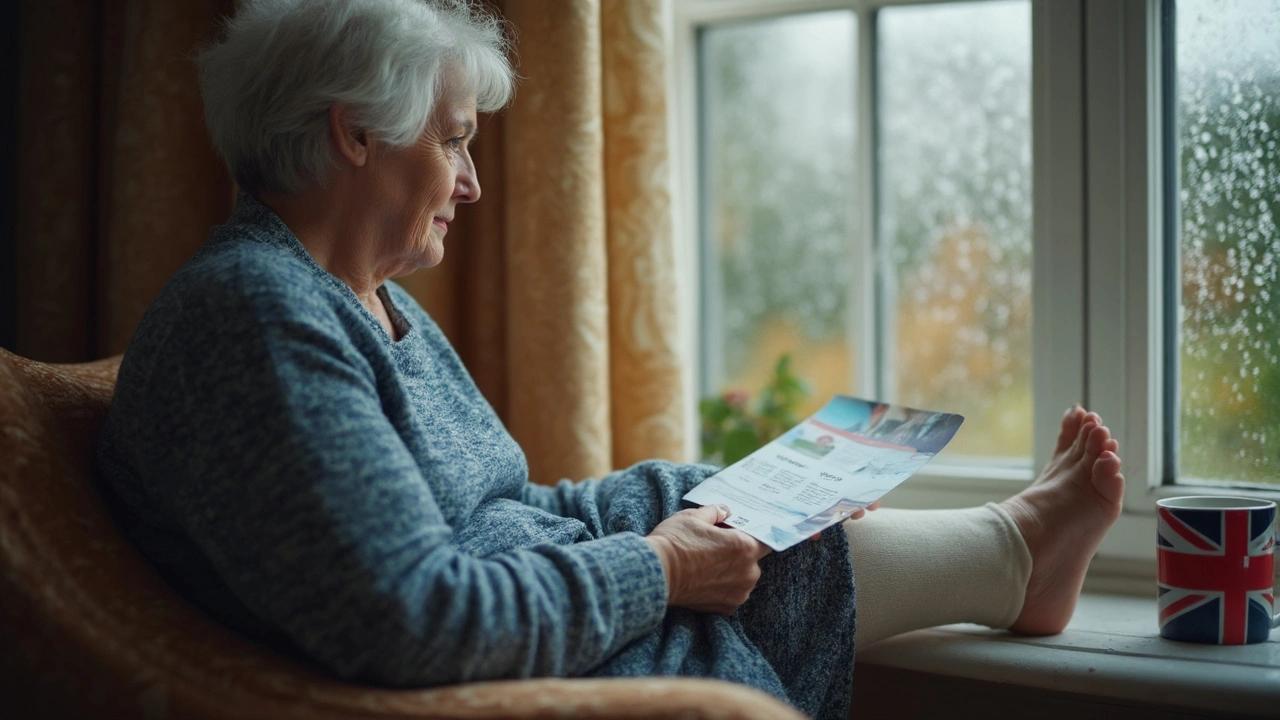Swelling Causes: Quick Guide to Why Your Body Swells
Swelling happens when fluid builds up in tissues. You can get it after an injury, during an infection, or from long hours standing. Sometimes it's mild and goes away with rest. Other times swelling signals a health issue that needs attention.
Common local causes are sprains, insect bites, and cellulitis. Those usually affect one area, hurt, and feel warm. If the swelling follows a cut or bite and redness spreads, suspect infection. Allergic reactions can cause sudden swelling of the face, lips, or throat and need fast treatment.
Generalized swelling — when both legs, or the whole body, puffs up — has different roots. Heart failure can make fluid pool in the legs and belly. Kidney disease stops your body from flushing excess water and salt. Liver disease lowers proteins that keep fluid in blood vessels, so fluid leaks into tissues. Hormone changes, like pregnancy, also increase fluid retention.
Medicine can cause swelling. Common culprits are calcium channel blockers for blood pressure, NSAIDs, steroids, and some diabetes drugs. If swelling starts after a new prescription, talk with your doctor about alternatives.
Lifestyle factors matter too. High salt intake makes your body hold water. Sitting or standing for long periods without moving slows circulation and causes fluid to collect in the lower legs. Obesity increases pressure on veins, worsening leg swelling.
Worried about a blood clot? Deep vein thrombosis (DVT) often causes one-sided leg swelling, pain, and warmth. If a leg suddenly swells and hurts, especially after travel or surgery, get medical help right away.
When to see a doctor: seek urgent care for sudden breathlessness, chest pain, fainting, a swollen throat, high fever with swelling, or leg swelling with severe pain. For slow, painless swelling you can’t explain, make a routine appointment. Your doctor may check heart, kidney, and liver function, review medicines, and order imaging or blood tests.
Practical steps you can try at home: raise swollen legs above heart level for 20 minutes several times daily, move around every hour to improve circulation, reduce salt in your diet, wear compression stockings if approved by your clinician, and use cold packs for painful injury-related swelling. Avoid tight clothing and stay hydrated — proper fluids help kidneys remove excess salt.
Preventive tips: keep weight in a healthy range, stay active, check medicines with your prescriber, and treat allergic triggers early. If you have chronic conditions like heart failure or kidney disease, follow your treatment plan and report weight gain of more than one or two kilograms in a few days.
If you need help finding reliable info on a medication linked to swelling or want tips for managing symptoms, browse our related articles below or contact a healthcare professional.
Track changes: take photos or measure the swollen area, keep a daily weight log, and note any new medicines or diet changes. These simple records help your clinician pinpoint causes faster and avoid unnecessary tests. Bring the notes to appointments. Act early and share details.
Understanding Oedema: Peripheral, Cerebral, And Pulmonary Swelling Explained
Curious why your ankles puff up or how the brain can swell dangerously? This article unpacks the three main types of oedema—peripheral, cerebral, and pulmonary. It digs into what makes each unique, symptoms to watch for, and tips on managing or preventing swelling. You'll find real tips, eye-opening facts, and clear insights on why oedema happens and what can be done about it. With everything from stats and risk factors to day-to-day advice, it's your go-to guide for understanding and handling serious swelling.
- View More
- 12

